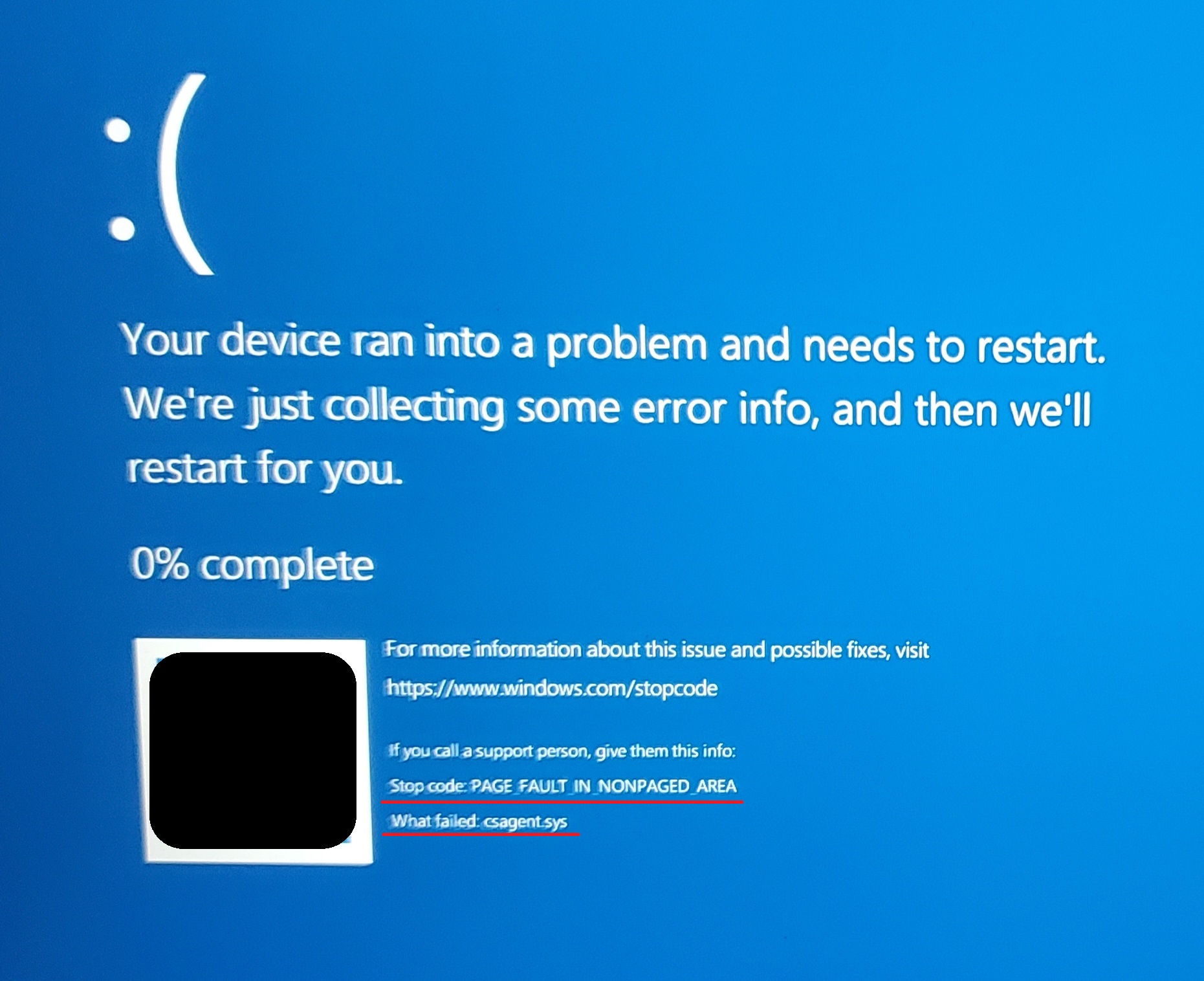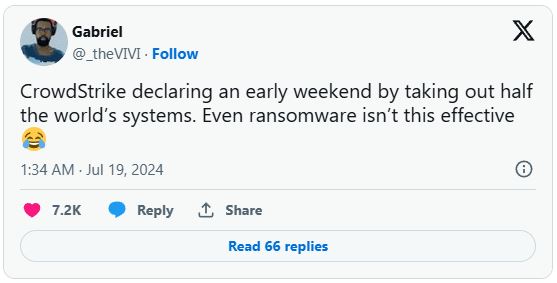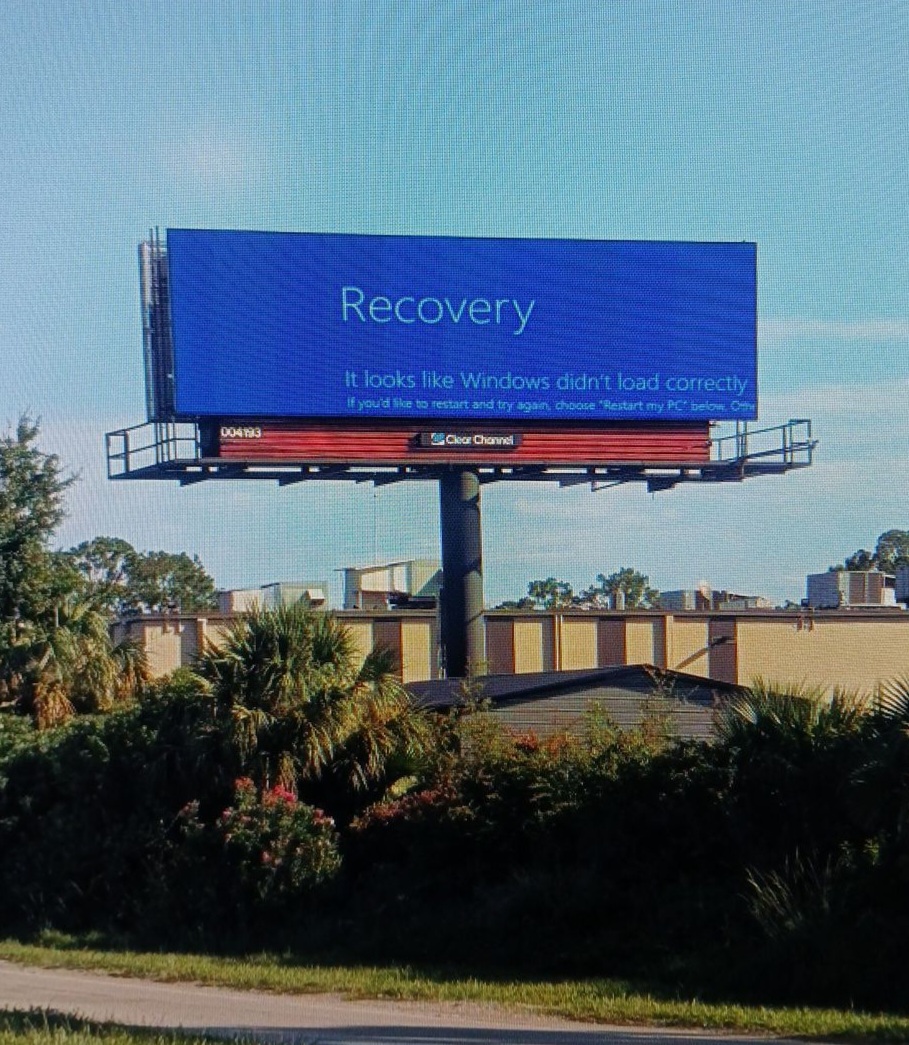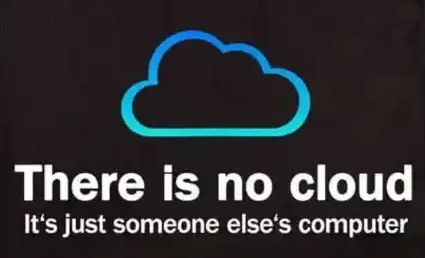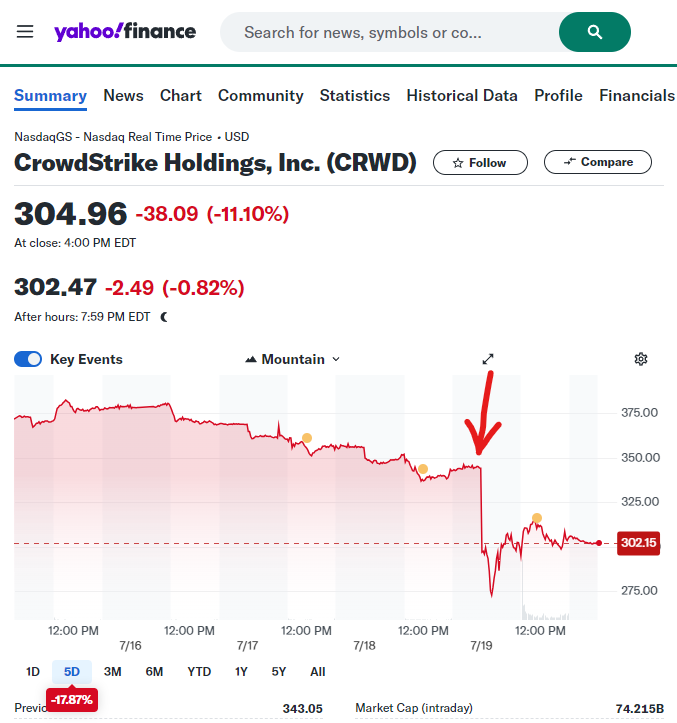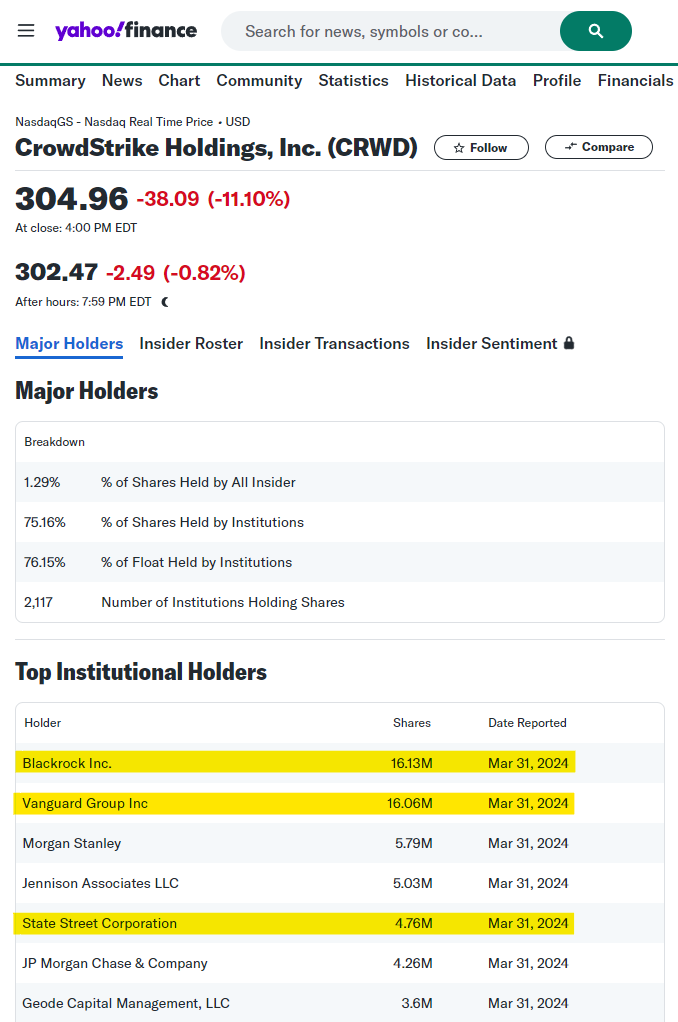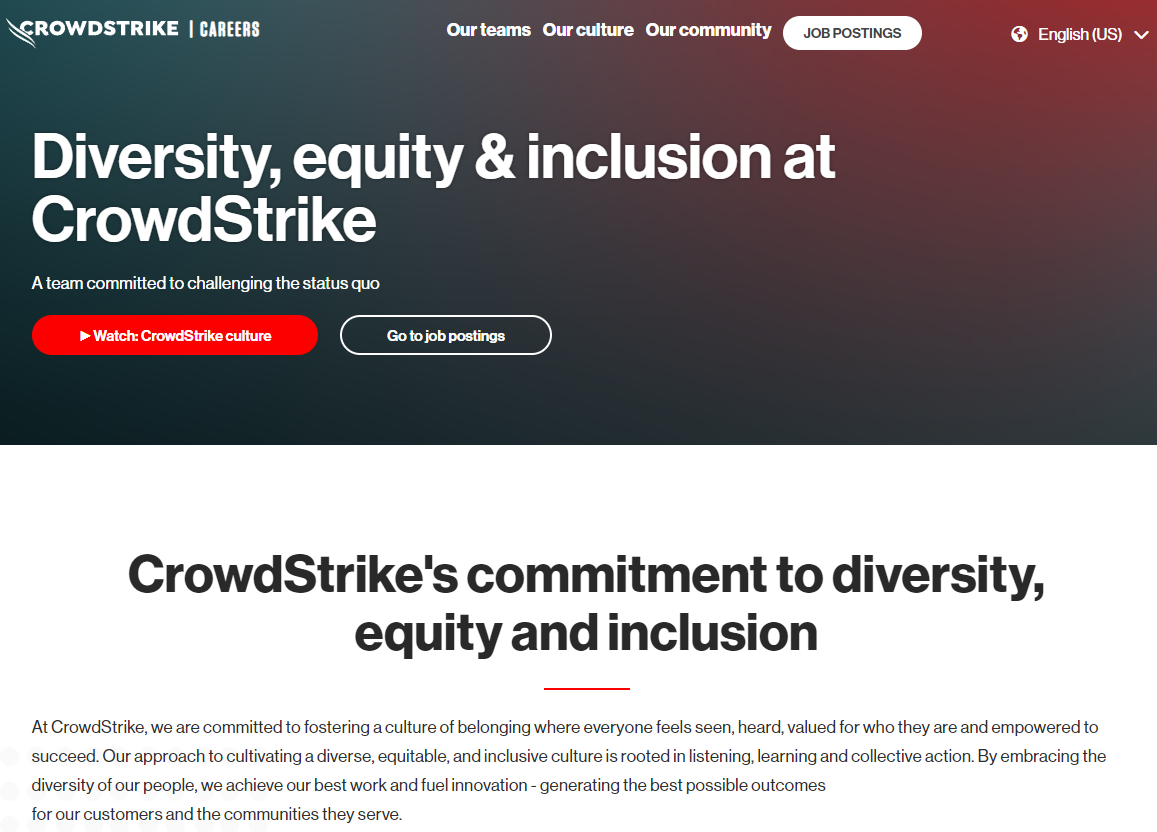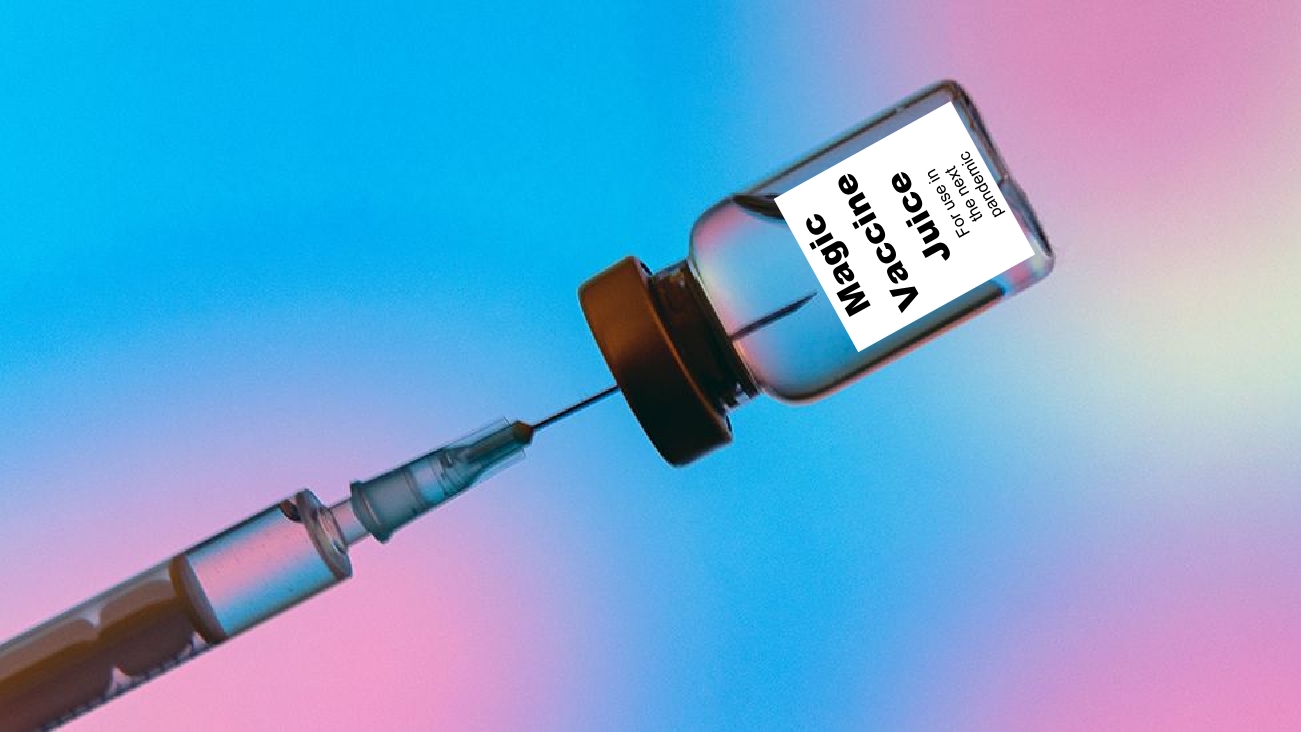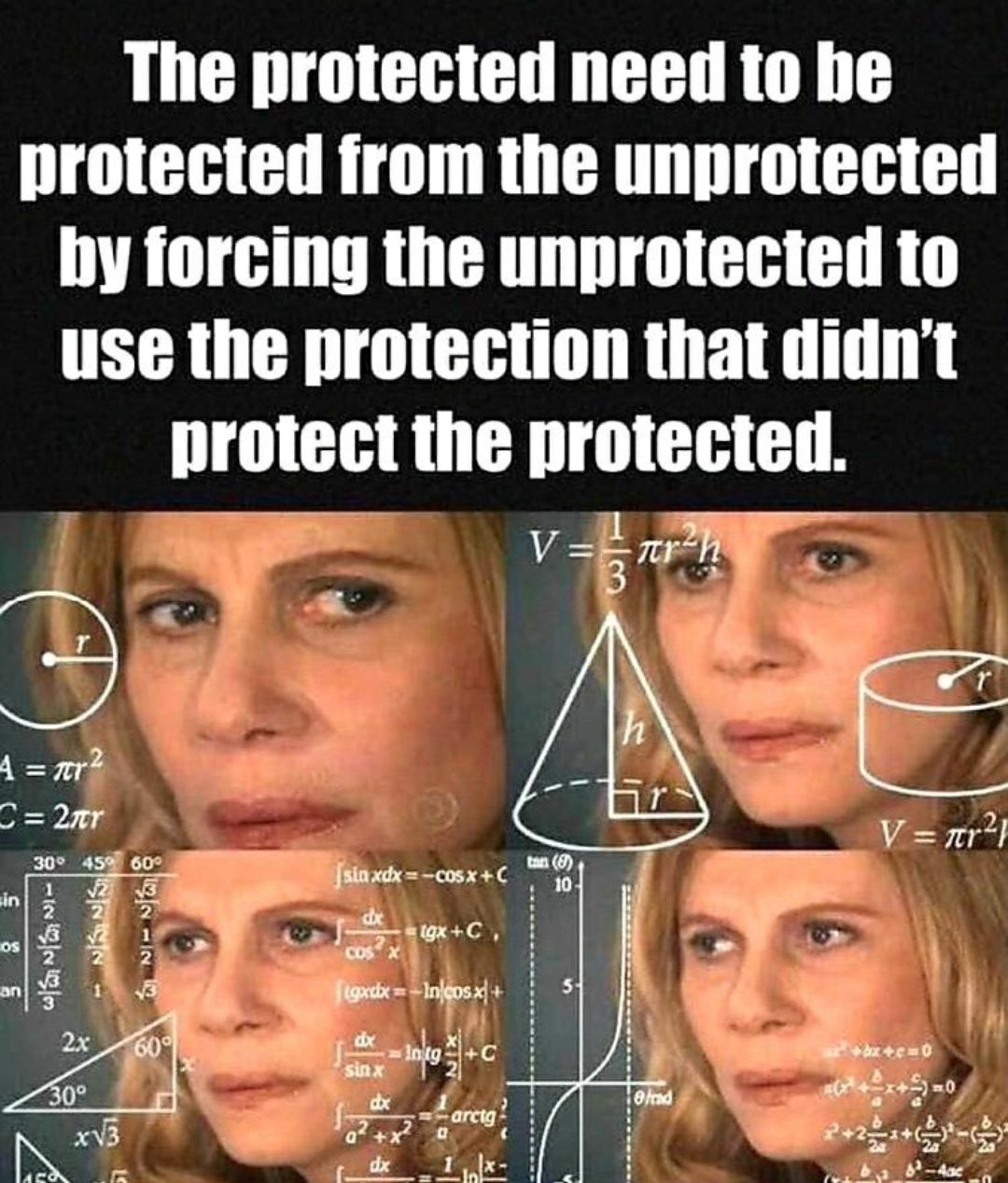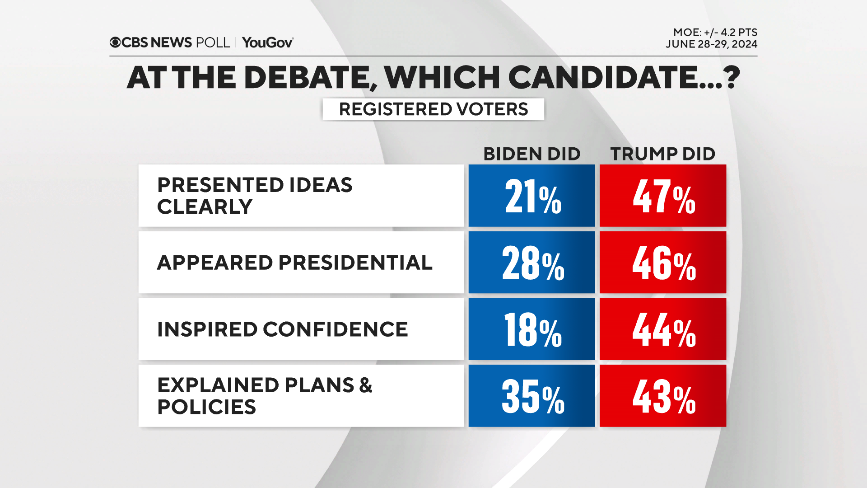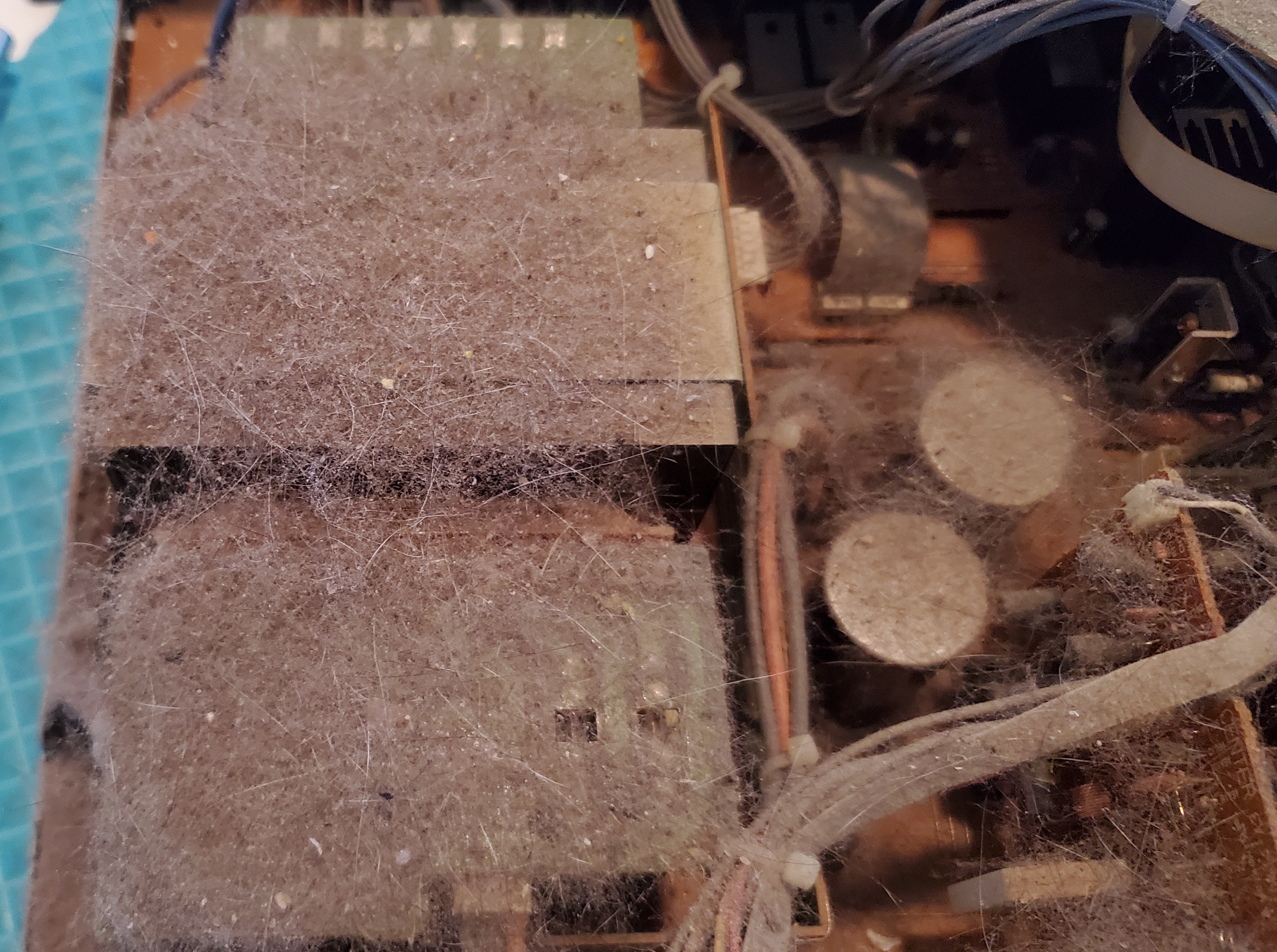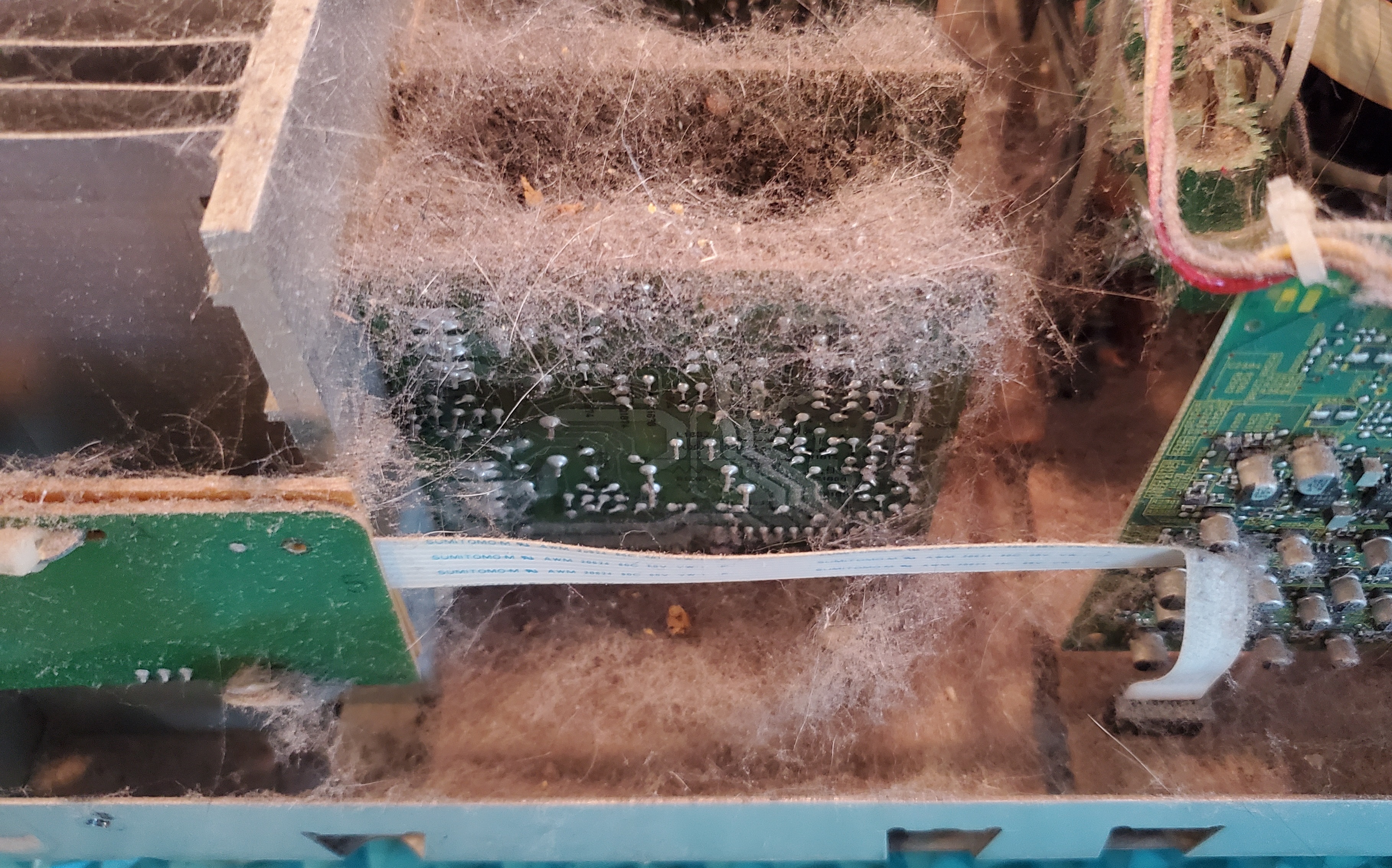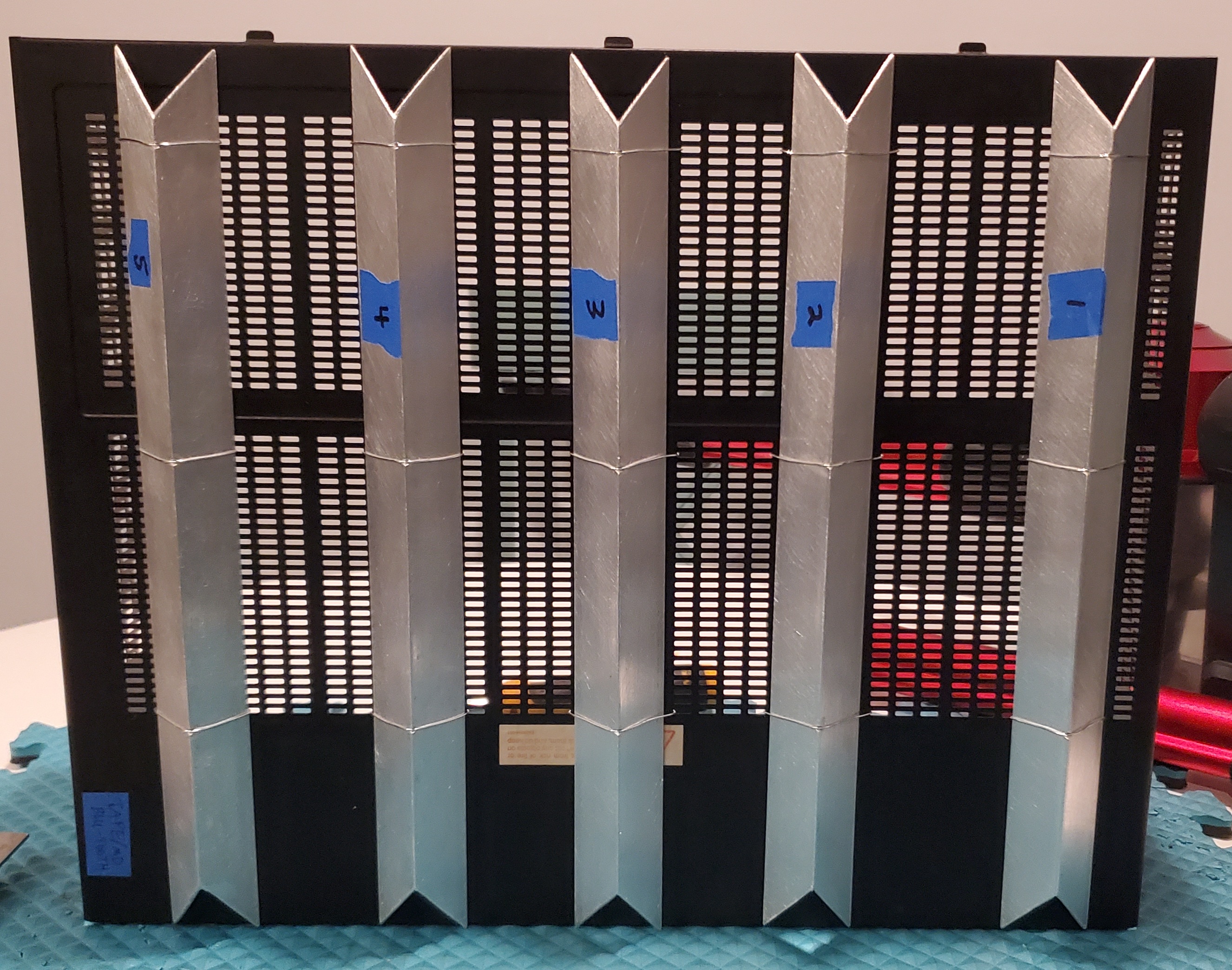CrowdStrike Strikes First
July 19, 2024 will go down as the biggest “blunder” of the modern cloud-based Internet dependent world. ClowdStrike's Falcon Sensor “endpoint detection and response” (EDR) software was responsible for the "largest ever" IT outage. I had to make the Beaky Buzzard logo for CrowdStrike, because that was the first thing that came to mind.
Here’s my experience with CrowdStrike as of today ? starting at a little before 2am.
I work from home as a consultant for my current employer. I have a corporate (client provided) laptop that I use for email, Microsoft Teams meetings, and general interactions with everyone I work with. Of course, I still call people on the phone and send text messages, but the majority of my work is done on my laptop. The client I support is more than 800 miles away.
At just before 2am Friday, one of my computer monitors lit up. I was just about to fall asleep. I peeked over and saw the normal corporate login screen, so I assumed that one of our cats was on my desk and moved a mouse, so I started to drift back to sleep again. Then it lit up again. This time there was a BSoD (Blue Screen of Death).
I thought that was rather odd, because I wasn’t on the computer and it had been idle for a long time. Updates usually aren’t pushed, and there’s ample warning before an update is going to happen.
In my personal experience, Blue Screens usually happen because of driver issues, or bad RAM. The corporate machines are seriously locked down, so there’s not much I can do. But I was able to get into the UEFI hardware test options. I ran the memory test overnight, it was similar to Memtest86. It came back in the morning with zero errors.
I exited the test, and rebooted the machine, then it Blue Screened again, this time I was ready, and I snapped a photo of it.
I noticed that the Stop Code was “PAGE_FAULT_IN_NONPAGED_AREA. Mostly useless, but it also listed “What Failed,” which was “csagent.sys.” CS for CrowdStrike. I went to one of my computers and looked to see what might be going on, and immediately saw the news about how CrowdStrike was causing errors on machines all over the world.
The problem first arose overnight for the East Coast of the U.S.
"CrowdStrike is aware of reports of crashes on Windows hosts related to the Falcon Sensor," the cybersecurity company wrote in an alert confirming the outage at 1:30 a.m. ET on Friday. CrowdStrike's Falcon Sensor is software designed to prevent computer systems from cyber attacks.
"Symptoms include experiencing a bugcheck\blue screen error related to the Falcon Sensor," CrowdStrike's alert continued. "Our Engineering teams are actively working to resolve this issue and there is no need to open a support ticket."
…
Fortunately, CrowdStrike has since announced at 2:30 a.m. ET that it has identified the update causing the issue and rolled it back. The company also offered a workaround for anyone having problems:1. "Boot Windows into Safe Mode or the Windows Recovery Environment
2. "Navigate to the C:\Windows\System32\drivers\CrowdStrike directory
3. "Locate the file matching 'C-0000029*.sys', and delete it.
4. "Boot the host normally."
Of course, having to do this for every single computer in multiple companies across the globe is still likely to take some time.
I figured that was an easy enough fix. I could boot the machine in recovery mode get to the command prompt, path to the file and delete it, or rename it.
Nope. That was not an option, because the machine is encrypted. So the recovery utility takes me to a drive “X:\” and “C:\” is not accessible. Without the drive encryption key, there’s nothing I can do to fix the issue. And, I highly doubt that this corporate client is going to give me the drive encryption key. They’re likely going to have to mail me another laptop.
This outage caused serious damage, not just to businesses, but to critical infrastructure, air travel, and emergency services. 911 was down in some areas, because their dispatching systems are Windows based, and they were using CrowdStrike Falcon Sensor.
The problem is worse for large corporations, because now they have computers already deployed that can’t be corrected remotely. Requiring someone to go get the computer, or get in front of the computer to correct the issue.
“You have to physically walk over to every computer and power it down and then bring it up, and when the screen comes up, you have to hit F3 to go into what they call Safe Mode and then go and delete a file somewhere,” the New York law firm CISO explained. “It's just a nightmare.”
Good luck getting quickly to this one.
I have never liked the idea of cloud-based services.
“The cloud” sounds great, until something goes wrong. Then you’re stuck, and your IT people are powerless to fix it.
Once upon a time large corporations, and many local governments had a well staffed IT department. They would test systems in a development environment. Say they support (5) different hardware platforms, they could test Windows updates, or other software changes on those dev hardware platforms first. If there are no issues, they can, within reason, deploy the changes across all their systems and have a reasonable expectation that everything will keep working. Same goes for servers or VMs.
But with CrowdStrike that doesn’t happen. These corporations and government agencies outsourced all of that. The 3rd party company has free range to make a change ? without anyone on the business or government side knowing that it’s happening. SaaS (Software As A Service) programs are sold this way. Everything is always “up to date” because the 3rd party manages it, and now local IT people don’t have to. But they also just signed their digital life away.
CrowdStrike is probably a bad investment ? now.
Founded in 2011, CrowdStrike quickly became an industry leader in cybersecurity and has only grown in popularity in recent years as demand for such services has increased.
It has made an aggressive marketing push that included Super Bowl ads and has worked to tailor its products to the needs of large organizations with complex security. At least one 2023 analysis, from Canalys, found the company controls roughly 20 percent of the cybersecurity market.
Reviews for the company’s products were broadly positive in the past, describing them as user-friendly and accurate in finding threats. According to the Motley Fool, its [CrowdStrike's] stock surged 400 percent in the last five years.
This whole experience got me thinking, “Wow, I bet someone at CrowdStrike is getting canned over this! And I wonder what’s happening to the stock price? You can’t take a large portion of the world’s critical services down and not have a serious stock drop.”
Well, their stock dropped, but nowhere near as much as I would have figured.
Strangely, CrowdStrike stock started to drop significantly in the days leading up to the event. Did somebody know something?
But then, I thought, who are their largest investors?
Perhaps that’s how their stock isn’t tanking. After all, I know from personal experience that CrowdStrike is big into ESG and DEI. I actually applied for a position at CrowdStrike around four years ago. Their website was bragging about diversity and other such nonsense. During the online application process it asked for my preferred pronouns. I didn’t even know what that meant. I had to look it up!
CrowdStrike sent me test material with parts of virus code, I had to determine how the threat/malware was supposed to work. I was able to do that relatively easy. But I never got a call back.
I’m assuming that their stock is being propped up by the large investment firms. Because the big firms aren’t pulling money out, the stock is staying higher than it otherwise would.
But then, those “investment firms” do a lot more investing based on social issues, not ROI. They tend to invest a lot into companies that are pushing an agenda, like DEI. I’m sure that CrowdStrike got plenty of dollars for pushing woke nonsense ? over the past five years. Perhaps that’s why their stock increased 400% during that time.
Can this be explained by incompetence?
Yes and no.
Yes: insofar as many IT departments have sold their soul to 3rd parties. That was never a good idea, because very little could be tested in-house and guaranteed. Single points of failure are never good.
No: when it comes to the changes made on the CrowdStrike side. From what I’ve seen the computers effected were primarily Windows 10 and Windows 11 machines ? that were upgraded from Windows 10. Not so much an issue for the machines that were originally Windows 11.
This means that the issue could be Windows build version dependent. Nevertheless, CrowdStrike, fresh with a 400% stock increase, should have the resources available to test their product on a wide array of potential Windows builds. Falcon Sensor has two-way communication with the machines that run the software. CrowdStrike knows what Windows builds are out there, and what machines are running their software.
CrowdStrike didn't gain nearly 20% of the the global IT security market through sheer incompetence. Don't fall for the DEI excuse.
Was this some kind of test?
Only the people calling the shots could possibly know that.
I suspect that someone knew about this. After CrowdStrike Falcon Sensor was installed on my work laptop. I did encounter a few Blue Screens. The Blue Screens increased in frequency before the 07/19/24 event.
I was going to request a new laptop last week, because I assumed that bad RAM was the most likely culprit. Maybe CrowdStrike was testing something, and getting feedback from the machines running their Falcon Sensor software?
I can’t say for sure, but I can’t see the world’s largest IT outage being a "huge mistake," where everything just lined up perfectly.
Is there a pattern here, involving DEI and failures?
Of course there is.
That’s the entire point of DEI. To ensure that the most critical economic, and safety related aspects of our economy ? are staffed by incompetent people.
As soon as some large multinational company goes all in with DEI initiatives, they begin to see problems. Boeing is the probably the first example that comes to mind. Anheuser-Busch and the whole Bud Light trans promoter is another.
In each of these examples there were no “mistakes” made.
Everyone knows that airplanes need to be built and maintained by the most skilled personnel.
Everyone knows that anybody drinking Bud Light is NOT going to be happy watching some trans chick (dude) promoting their alcoholic beverage. The official beer of the NFL.
These aren’t mistakes, anyone can see that these decisions would lead to bad outcomes. It doesn’t take polling or research to understand that doing the opposite of what works, might cause issues.
Where does this leave us?
People likely died because emergency services like 911 were down for hours. Flight cancellations and delays will likely continue for a few days at minimum. Hospital services and many surgeries were canceled. This outage will result in billions of dollars lost.
However, unless things change drastically, and IT departments start doing things in-house, this will become the norm.
Just like there are rolling blackouts in California, there will be rolling IT outages globally.
Do I think this world changing event will force change? Absolutely not. Because the people who made the decisions that got us to this point were incompetent, and they have plausible deniability. They didn’t cause the outage, CrowdStrike did. But the fact remains, if they would have managed things the way it was done in years prior, this kind of thing wouldn't have happened.
That being said, the primary stock holders in CrowdStrike are going to keep it propped up to ensure it's viability. This will cause many corporations and governments to consider this a one-off kind of event, and dismiss the entire ordeal. As they say in business, "That's what insurance is for right? I’m sure this is a rare thing."
It appears that many of these companies are being corralled into a single point of failure scenario, for whatever reason, and they are too incompetent to see what's coming next.
What do you think?
Please leave a comment, like it or hate it... You DO NOT need to register to leave a comment. Email addresses are NOT used. Just make one up "someone@somehost.com"
The COVID-19 Vaccine Problem is Simple
Everything surrounding Covid-19 and the vaccination campaign appears complex, but the reality is very simple. The goal always was, and still is, "everyone in America, and everyone around the world gets vaccinated." This according to the United States Deputy Secretary of the Treasury.
"...We face an economy that's in transition. And as far as that transition we are seeing high prices for some of the things that people have to buy. But, the reality is that the only way we're going to get to this place where we work through this transition is when everyone in America, and everyone around the world gets vaccinated. That's why the president continues to be focused on the idea that we get everyone we can vaccinated in this country."
Covid will be used to scare the public once again. Look at this headline:
A covid summer uptick is underway as FLiRT and LB.1 variants ascend
Coronavirus infections are likely growing in 44 states and territories as of June 25, according to the Centers for Disease Control and Prevention.
Nationally, coronavirus activity in wastewater remains low but is increasing; it is highest and rising most sharply in the West, according to the CDC. June data may be incomplete because of reporting delays.
...
“We have consistently seen over the past three years that there is a winter surge and there is also a summer surge,” Marlene Wolfe, program director for WastewaterSCAN, a private initiative that tracks municipal wastewater data, and an assistant professor of environmental health at Emory University’s Rollins School of Public Health. “Right now we are waiting to see whether we actually will see a downturn over the next couple of weeks and we’ve hit the peak here, or whether those levels will actually go up.”
...
The covid vaccine currently on the market is designed to target defunct XBB variants, but it still confers some protection against the latest variants. An updated vaccine is expected to hit the market in late summer or fall and will be promoted as part of a broader respiratory virus vaccination campaign.
...
CDC Director Mandy Cohen last week recommended everyone six months and older to receive that new vaccine. The Food and Drug Administration urged manufacturers to target the KP.2 variant.
Reed of the CDC said the new vaccine should be effective against the other common variants, citing early lab studies, because they are closely related.
...
If you contract covid-19, the CDC now advises people isolate until their overall symptoms have improved and they have been fever-free for 24 hours without the use of fever-reducing medication. The agency also advises precautions such as wearing masks and improving air circulation for an additional five days. This guidance applies to all respiratory illness regardless of whether you test positive for covid.
This change in guidelines has been widely cited by institutions who have dropped special isolation requirements for people who have covid.
...
With hospitalizations and deaths sharply declining and largely concentrated in elderly and severely immunocompromised people, long covid has become the largest threat to the general public. Long covid encompasses symptoms lasting weeks to years, including debilitating fatigue or brain fog and persistent coughing and chest pain.
The messaging here is jumbled. "Coronavirus infections are likely growing in 44 states and territories as of June 25." Now we hear that there is a winter and summer surge in coronavirus wastewater samples (keep in mind this does not translate to cases). The old vaccines offer "some" protection, new ones are needed, and they recommend that everyone 6 months and over get the new vaccines.
If you contract Covid-19, you no longer have to isolate if your overall symptoms have improved, and you have had no fever for 24 hours without the use of fever-reducing medication. What happened to "asymptomatic spread?"
Oh, and Long Covid is back. "Long covid encompasses symptoms lasting weeks to years, including debilitating fatigue or brain fog and persistent coughing and chest pain." There's no test for Long Covid. Your health care provider can only assume that's what is ailing you, therefore, there is no treatment for infection, only management of the symptoms.
WHO: Covid Shots Triggered Global Heart Deaths Surge
Official figures from the World Health Organization’s global database have revealed that Covid mRNA shots triggered a worldwide surge in heart failure and related sudden deaths.
The bombshell data was made public by a team of medical research investigators who were able to unseal and probe the data as part of a major international study.
The research was led by several investigators at Kyung Hee University College of Medicine, Seoul, South Korea.
They published the results of the study in the prestigious peer-reviewed Journal of Medical Virology.
Without getting into all of the study details, we know this to be true. The CDC was worried about the concern for myocarditis as well, and held an emergency meeting in June 2021.
The first portion of the meeting will feature an update on COVID-19 vaccine safety, including myocarditis cases seen after the administration of vaccines built on messenger RNA technology, according to the meeting agenda.
The CDC has so far identified 226 reports in people ages 30 and younger that might meet the agency’s “working case definition” of heart inflammation following the shots, Dr. Tom Shimabukuro, a deputy director at the agency, told the Food and Drug Administration’s vaccine advisory group during a virtual meeting. That was out of about 12.2 million who had received a vaccine as of May 31.
While the vast majority of the patients have recovered, 41 had ongoing symptoms, 15 are still hospitalized, and three are in intensive care units.
Shimabukuro told members that the CDC will continue to evaluate myocarditis following vaccination and assess the benefits and risks of the Pfizer and Moderna vaccines, which both use mRNA technology, ahead of the emergency meeting next week.
“I think the myocarditis is something that needs to be looked at closely because we’re likely seeing the tip of the iceberg,” added Dr. Michael Kurilla, director of the Division of Clinical Innovation at the National Center for Advancing Translational Sciences, which is part of the National Institutes of Health.
Pfizer said it supports the CDC’s assessment of the heart inflammation cases, noting that “the number of reports is small given the number of doses administered.”
“It is important to understand that a careful assessment of the reports is ongoing and it has not been concluded that the mRNA COVID-19 vaccines cause myocarditis or pericarditis,” the company told The Epoch Times in an email.
What is life like after myocarditis, or pericarditis?
The primary treatment for myocarditis is supportive care based on guidelines and recommendations published by major cardiovascular organizations in North America and Europe. Most times, cardiac rest and / or oral medications is all that is needed. Dependent on the severity of the case, administration of intravenous cardiac medications or the insertion of a temporary pacemaker may be necessary. In severe cases, extracorporeal membrane oxygenation (ECMO) or a ventricular assist device (VAD) may be necessary in the acute phase to allow the heart to recover or to serve as a bridge to transplantation. Immunoglobulin or corticosteroids have also been used in some acute cases to inhibit the immune response.
Following the acute phase, surviving patients may recover completely or have long-term deficits. In severe cases, cardiac transplantation may offer the best chance for long-term survival. For most patients, if they receive an early diagnosis, they are able to survive myocarditis without major medical support. However, 1-8% of those diagnosed with myocarditis require a heart transplant. Heart transplantation is generally reserved for patients that have attempted other medications and surgeries, but their condition has not sufficiently improved.
If you need a heart transplant or will need treatment for myocarditis, it is important to lead a healthy lifestyle in order to support proper heart function. Your doctor may recommend that you reduce sodium in your diet, avoid alcohol, limit fluid intake and quit smoking. It’s also generally advised to avoid competitive sports, and other rigorous exercise for a period of time after diagnosis, to be determined by your cardiologist.
...
When symptoms of pericarditis appear, physicians will look for underlying conditions that could be causing the tissue to change. Many cases of pericarditis stem from the occurrence of additional infections, diseases, or injuries, including:
Heart attack or surgery
Infections
Systemic inflammatory disorders such as lupus [cytokine storm, a listed possible side effect of mRNA vaccines]
Heart trauma
Kidney failure
CancerTo treat pericarditis symptoms, you must control and treat underlying conditions. If left untreated, pericarditis can return or worsen to develop additional heart conditions. That’s why it’s so important for patients to follow after-care procedures. By taking the proper medications and avoiding certain activities, you can treat pericarditis as well as the disease that’s causing it.
Myocarditis and pericarditis are serious life-threatening/life-changing conditions.
Both should be considered when taking into account that the fatality rate for younger people who contracted Covid was statistically zero.
The vast majority of those who died from/with Covid had multiple preexisting conditions. This was known all along, and yet, the push to get younger people vaccinated marched on. Of course, this was to "protect" the elderly -- only the vaccines didn't help to "stop the spread," which was also known in the beginning.
The claim of "stopping the spread" was based on the idea that less infected people, would result in less people spreading the virus. However, it was known that the vaccines couldn't stop infection. The claim was that they stopped "symptomatic infection."
The premise for vaccinating everyone was the "asymptomatic spreaders." Because people didn't have symptoms, and didn't know they were sick -- that was perpetuating the spread of the virus. The spread was inevitable with or without vaccines. To make things worse, vaccinations had the potential to create even more "asymptomatic spreaders" thus worsening the situation.
All roads lead to, "Vaccinate everyone period. The science will follow." Only the science never did "follow."
The science that is following -- is undermining nearly all of the decisions made during the COVID-19 scare.
Covid was much less of a "public health concern," instead it was used as the pretext to mandate specific "public health measures." Don't be fooled again.
Please leave a comment, like it or hate it... You DO NOT need to register to leave a comment. Email addresses are NOT used. Just make one up "someone@somehost.com"
Happy Independence Day - 2024
Independence Day mean a lot of things to a lot of people. This year I'll just focus on this:
The United States of America was founded on the belief that God meant for people to be FREE -- not "better governed."
Have a Happy Independence Day!
These are some strangely named fireworks I've purchased over the years:
A few years back there was another Golden Shower Fountain hiding in the pack!
Stay safe out there, and keep a hose close by.
Please leave a comment, like it or hate it... You DO NOT need to register to leave a comment. Email addresses are NOT used. Just make one up "someone@somehost.com"
Will the long knives come out for Jill Biden?
Voter confidence in Joe Biden has gone down sharply following this first debate. Those numbers are reflected in a recent CBS – YouGov poll.
These are two of the most important issues as it relates to the presidency (at least as far as I’m concerned). Which candidate will positively effect your finances (which indirectly relates to freedom) and which candidate even makes sense?
Do you think that you’ll be in a better financial situation under this candidate? This is the #1 most important question – to most people out there.
Does the candidate even make sense. Do they understand what they are talking about, or just regurgitating stuff they’ve heard before? If a candidate can’t get the point across in a friendly debate, how are they going to push back against their advisors? More importantly, do they even understand what they are talking about?
Another important question is, “Does the candidate have a strong dislike for the American people?” We know that the “elites” within the Democrat Party don’t like average American citizens. They don’t like “smelly Walmart shoppers” or "[a] basket of deplorables" as Hillary Clinton so aptly put it.
I had to correct that last part. It was Peter Strzok (Peter Struck/Stroke) who said, “Just went to a Southern Virginia Walmart. I could smell the Trump support.”
It was Hillary Clinton who said, "You know, to just be grossly generalistic, you could put half of Trump's supporters into what I call the basket of deplorables. Right? [Laughter/applause]. The racist, sexist, homophobic, xenophobic, Islamophobic — you name it. And unfortunately there are people like that. And he has lifted them up. He has given voice to their websites that used to only have 11,000 people, now have 11 million. He tweets and retweets offensive, hateful, mean-spirited rhetoric. Now some of those folks, they are irredeemable, but thankfully they are not America.
Biden is likely on the way out
Because of Biden’s poor debate performance. His potential as a serious candidate is being questioned by pretty much everyone. There are many big democrat donors that want Biden out. After all, you can’t buy influence through someone – who has no influence.
Still there are many within the Biden camp, who want Joe to stay in. They are pushing to have him keep moving forward with the campaign.
But there’s another side to this issue, a side that I don’t think many have considered.
Those who want Biden out are setting things up to use Jill to take down Joe. They’ll blame Jill for everything. She somehow “shielded” Joe from everyone, so they couldn’t witness his cognitive decline – even though we all saw it from day one – even before day one.
Remember Biden was known for his “gaffs” during the Obama administration. He was ‘Ole Uncle Joe. The uncle that you just don’t talk about at “the family barbecue.” Joe Biden’s cognitive decline was never in question amongst people paying attention – it was always noticeable.
They have simply lied too long to back out now. Letting it be known that Biden was never capable of running the show – even before 2020 – will void the last bit of enthusiastic support that the Democrat/Biden voters might have had for any potential candidate.
They’re going after Jill?
The Democrat leadership has to be careful in their criticism of Jill Biden – because she’s the first modern female president. I only make the distinction of “modern” because Woodrow Wilson’s wife was considered to be running the country for a while after his stroke.
You heard that right, Jill Biden is the first female president.
Once it’s more widely known that Joe Biden hasn’t “been all there” mentally for the entirety of his time in office, people will want to know, “Who’s been running the show?”
But this is a game of political chicken. It all hinges on whether or not they boot Biden at the DNC convention – and more importantly, if they choose a woman as his replacement!
If they go too hard after Jill Biden, it will reflect badly if they chose a female candidate. After all, Jill Biden really screwed things up without Joe Biden’s wit and insight, right?
Who will the DNC pick?
I think this question will be answered by how they treat Jill Biden. If they do go after her, they’re going to pick Gavin Newsom, or some no-name dude.
If they allow things to play out in a more “natural seeming way” they might pick Hillary Clinton as their candidate. She still claims that the Russians are the reason that she lost in 2016.
Keep in mind, the Democrats don’t expect to win the presidency, that ship has sailed. You have to imagine everything going down, as if the MSM narrative is believed by everyone. That’s how the Deep State/Permanent Government operates. That’s why so much of this is confusing to people who are paying attention – because it doesn’t really make sense.
The narrative is that Biden has been keeping tight control of the government, and is making all the big decisions. The reality is Biden was never really president. He was just paraded around, while his advisors ran the show.
My take on it all
I believe this all makes for good theater really. From what I can surmise, the outcome of the 2024 presidential election won’t matter as much as we would like it to. I’ll explain why.
It seems likely that Trump will win in a landslide, regardless of who the Democrats put up as their nominee. That being the case, I believe that the Democrats are going to “make sure” that they keep, or take more senate seats, effectively neutering Trump.
Trump won’t be able to remove Deep State/Permanent Government actors – without the help of the senate. Keep in mind Republicans couldn’t manage to oust Alejandro Mayorkas, who is arguably the worst Homeland Security Secretary.
Meaningful (pro-American) legislation will never make it past the senate – for Trump’s entire second term. That leaves only executive orders as a means to get things done for the American people.
Trump’s second term will likely be a continuance of “exposing the crooked system as a whole.” Don’t expect things to be fixed – that’s up to us now.
Everything has to keep working its way from the ground up. That’s the only way this country gets back on track. It can be fixed from the top. The unelected bureaucrat class is too well protected, and congress has abdicated too much of their power to rein it in. Everything falls back on the American people. This involves fixing things at the local level, then pushing uphill.
What do you think?
Please leave a comment, like it or hate it... You DO NOT need to register to leave a comment. Email addresses are NOT used. Just make one up "someone@somehost.com"
Hostile Architecture and Stereo Receivers
I've always had a love for sound. So when it came time to purchase a new stereo receiver as a gift for my wife's parents, I went to work finding the best stereo I could find for the price.
This was in 2003, before Amazon was really what it is today. I would shop in large chain stores to find really good products. Stores like Sound Advice, and BestBuy, then try to see if someone sold them online for cheaper.
I found this stereo receiver.
Here is a quick look at the specs:
The JVC RX-8040 features premium performance with high current 130 WATT x 6 This receiver also incorporates new convienience features such as Virtual Surround Back and Quick Speaker Set-up. The DSP processor enables the RX-8040 to provide the highest level of accuracy in decoding Dolby Digital EX and DTS-ES and Dolby Pro Logic IIx. It also makes possible All Channel Stereo, and the JVC exclusive DAP soundfield.
- 130 watts x 2 min. RMS, both channels driven into 8 ohms from 20Hz to 20kHz with no more than 0.08% THD
- 130 watts x 6 min. RMS, into 8 ohms, 1kHz, 0.8% THD
- DVD Multichannel Audio Compatible (5.1 channel analog input and 5 separate amps) for connection to existing and future multichannel sources such as DVD Audio
- Texas Instruments 32/64-bit Floating-Point DSP
- Virtual Surround Back: allows users to playback 6.1 channels without adding a surround back speaker
If you noticed that little white sticker at the top of the receiver. It's a warning not to put anything on top of it, because it might catch on fire. But two pets put themselves on top of it, two of our cats. The receiver is powered on most of the time, and it gives off a decent amount of heat, just what cats love.
I never worried about it much, because the cats would just get off of it, if it was getting too hot. What I didn't consider was their hair!
I know that cats shed, but you wouldn't imagine that it's much when all they are doing is sleeping. They were never moving around on top of the receiver, they would just get on top and sleep, they didn't clean themselves, or do much moving around at all. But alas, the hair came out anyway. And man, did the hair come out!
Once I removed the cover, I was greeted with this. Mind you, there was never any hair on the cover ever -- because the cats were dusting it off with their bodies.
As you can see, there was quite a bit of hair in there!
Cleaning the receiver was not too bad. I used a vacuum cleaner and shop air to get all of the hair out.
The next part was to come up with some way to keep the cats off of the receiver. I was bouncing around a few ideas, when my wife reminded me of "hostile architecture" video we saw a while back.
For those who don't know I'll show some examples. Hostile architechture was placed in various cities across the country, to keep homeless people from being able to sleep on park benches, or in store windows.
There's no sleeping on these benches.
The plan was to create something uncomfortable for the cats, but not block airflow through the receiver. After looking around my garage I came up with an idea.
I found some aluminum angle stock that I bought a few years ago, but haven't used it yet. I decided to make angle iron strips that would be good for airflow, and hopefully just uncomfortable enough for the cats.
When working with metal, I always like to make it look art-deco, because why not? People like that style now. Here's what I came up with.
The part where it says "HOT RESISTORS ARE 1.8Ω 2W" was from around 2010. My wife's parents purchased a newer receiver because they wanted one that could switch HDMI video. My wife's dad gave me their old one (this JVC). I cleaned it out, but noticed that there were resistors which had been so hot, that their color bands were almost gone. I wrote down the values in case I needed to change them some day.
It paid off, because some time around 2016, the receiver died. Once I started checking it out, I found that one of those resistors had burned open! I looked everywhere but couldn't find a replacement. Finally I found one on NewEgg. It was a 1.8 Ohm 25 Watt wirewound resistor, used for elevator controls, and made in Russia. 25 Watts is way more heat dissipation than was required, but that's fine because it just means it's overkill. I replaced all of the old resistors and it's been doing find ever since.
Now my surround sound receiver should stay cat hair free for years to come. Also, it will have an edgy art-deco look about it. Haha!
It's always something...
Please leave a comment, like it or hate it... You DO NOT need to register to leave a comment. Email addresses are NOT used. Just make one up "someone@somehost.com"

